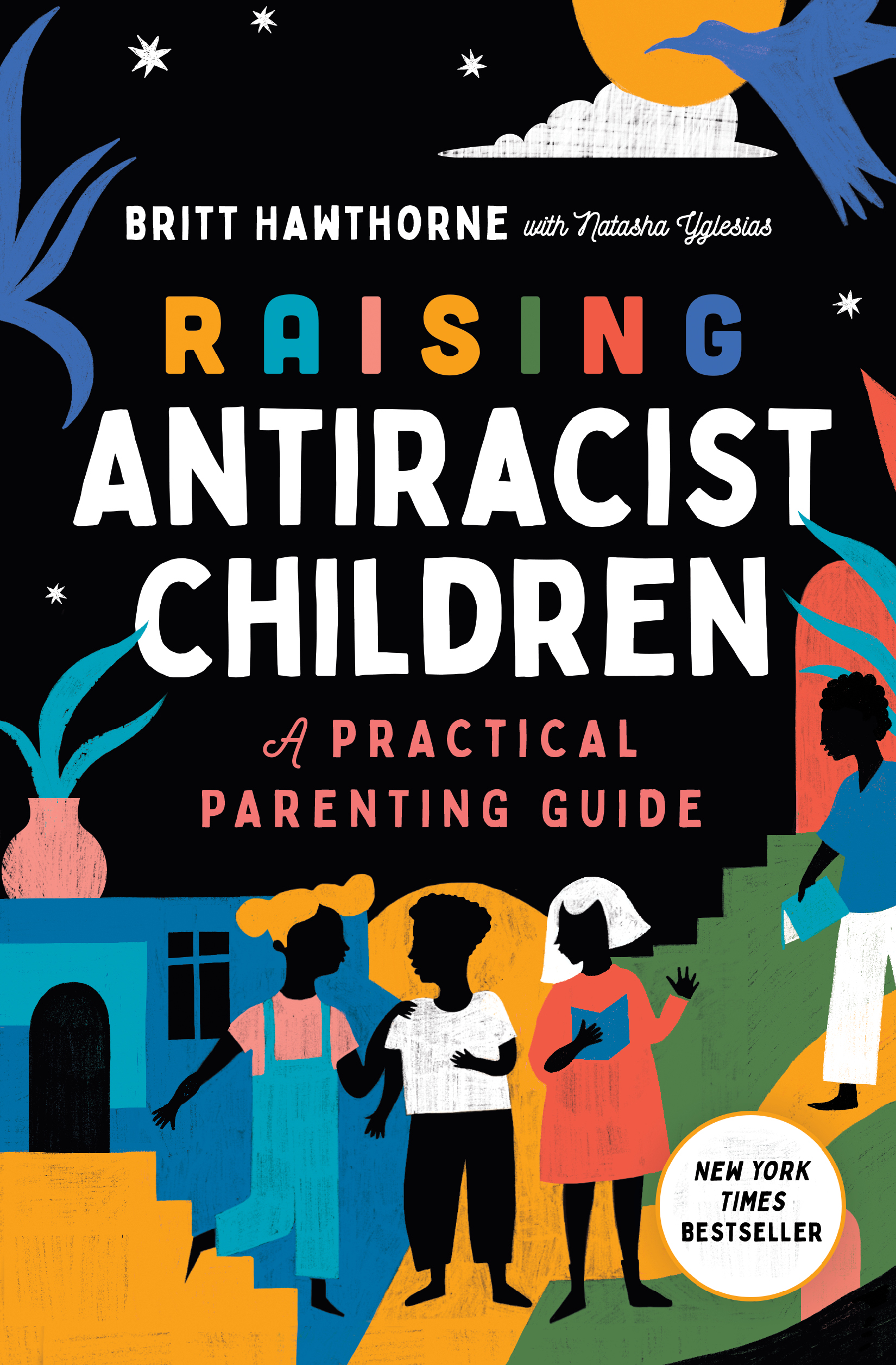As an educator, I place a strong emphasis on involving the families of my learners in the classroom and building positive relationships with them. I believe that open lines of communication and collaboration are essential for creating a positive and supportive learning environment for all families involved. But knowing how to accomplish this goal—building strong teacher-parent partnerships—can feel like an insurmountable challenge. Without clear direction from the school itself, it can feel that you are alone in your journey to create stronger bonds and lines of communication with families. Let’s design and implement a thoughtful, organized, and effective method for creating strong teacher-parent partnerships, together.
Stop and Think
Before we start learning together, I want to check in with you. Take a moment to read these questions and reflect on your answers. Most likely, your answers will fuel your enthusiasm for developing strong relationships with families.
- When you were a child, when, how, and why did your teacher talk with your parents/caregivers?
- Were you ever involved in the conversation? If so, how did you feel?
- At your current school community, how involved are the parents?
- What do you think would be the most effective way to initiate communication with parents at the beginning of the school year?
- What information do you think parents need to know about classroom policies, expectations, and curriculum?
When I present these questions to educators, almost everyone cites their childhood experiences of parent-teacher communication and the current involvement of parents in their school communities as negative experiences.
Many educators say, “Teachers only contacted parents when something was wrong” or “My parents weren’t involved in the way I want my learners’ parents to be involved now.”
Nowadays, many teachers describe a mix of under-involvement and over-involvement of parents in their schools. There are the parents who are over-involved and tend to speak for all of the other parents, and then there are the parents who do not attend school events or parent-teacher conferences. This pattern feeds into itself, creating an unbalanced environment where not all parents are able to fully participate in the school life of their child.
What Does It Mean To “Participate” As Parents?
The word “participate” is a loaded word because everyone has a different idea of what it means. Let’s break down parent participation into three categories:
- Memory-making moments: Attending the first and last day of school, joining class field trips, attending class parties, etc.
- Classroom support: Volunteering in the classroom by making copies, stuffing folders, organizing parties, sorting books, helping with sight words or math facts, and more
- Student support: Helping their child because of academic or behavioral readiness/expectations
For the most part, families “participate” in the first and third categories of participation: memory-making moments and student support. Families will be there for the first day of school, any special events, and, if necessary, any additional conversations with teachers to address academic or behavioral issues.
Where there is a deficit of participation across the board is the second category: classroom support. Because there is so much on a teacher’s plate including dismantling the systemic inequities that exist in our society (such as lack of housing, food, healthcare, childcare, etc.), we often turn to our families for support. Not only does participating in classroom support provide immeasurable aid to hardworking teachers, but it also helps to build strong teacher-parent relationships that benefit everyone involved.
7 Tactics To Build Strong Teacher-Parent Partnerships
If you’re feeling overwhelmed and undersupported by the parents of your learners, try these seven tactics to build strong teacher-parent partnerships. I encourage you to use all seven of these strategies if you have the capacity. Remember, putting in the work to develop strong teacher-parent partnerships will save you time in the long run. The effort you put into this at the beginning of the school year will give you much-needed support as the school year continues.
1. Write a Welcome Letter To Families
Start the school year strong with a welcome letter to families introducing yourself and setting a positive tone for the school year. I like to send one to the parents and to the learners. The main aim of the letter is to establish a positive and trusting relationship with both learners and parents.
- For Learners: The letter to learners focuses on self-love and aims to create a safe and open environment where learners can share their interests and preferences. I introduce my plans to engage in activities related to self-exploration and self-expression with them during the school year.
- For Families: The letter to families focuses on establishing a great first impression and making a commitment to building a relationship with them right away. The letter includes tangible plans to get to know the family and begin building our new relationship.
Sometimes, it’s helpful to see a few examples of something before we try it ourselves. Explore my Teacher-Parent Partnership Handbook for five example letters.
2. Develop a Welcome Packet
The next tactic involves developing a welcome packet that you’ll send home the first week of school. This packet will contain everything the parents need to know about the first two weeks of school.
- Here are some suggestions to include in the welcome packet:
- A signature page for learners and families to acknowledge receipt of the packet
- Preferred communication methods for parents to contact the teacher
- A get-to-know-you survey to gather information about learners and their interests
- A class schedule and class list
- Information about folders, binders, and other organizational tools used in the class
- Guidelines for celebrating birthdays in the classroom, considering different cultural practices
- Information about breakfast, lunch, and snack policies, as well as transportation arrangements
- School directory to facilitate communication between teachers and other staff members
- Grading policy and assessment calendar to keep parents informed about important dates and expectations
- Classroom expectations and rules
- Information about parent-teacher organizations (PTO) and volunteering opportunities in the classroom
- School uniform policy and school supplies list
3. Plan for Conversation and Conflict—Then Communicate It
Parents will inevitably have questions that arise throughout the school year and will want to get in touch with you—and that’s a good thing. It is very helpful for healthy communication to clearly explain how parents can get in touch with you. Remember to encourage open communication and curiosity from parents, instead of viewing it as resistance. Clear communication builds a partnership with families to create a positive and inclusive learning environment.
Extra Tip: Communicate how soon a parent can expect a response from you. For example, I answer emails in the order of oldest to newest. I respond to new emails within 48 hours. I tell my learners’ parents to type “URGENT” in the subject line of an email if they need a faster response. You will devise your own system but are welcome to adopt mine if you like it.
Here’s a template I use for my welcome packet. Feel free to use it to inspire your own letters and packets.
Your concerns and questions are important to me. At any time during the school year, you may also schedule private meetings with me to discuss your child’s progress. Feel empowered to email me at email@theschoolhouse.com or call the school at (555) 555-5555 to leave a message with the office. To maximize instructional time, family meetings work best before and after school. If a school-day meeting is required, please let me know in advance so I can notify the office to schedule a substitute teacher. Our upcoming Open House will share more about the Montessori method, the state standards, the grading policy, and required projects.
If you enjoy my free resources, consider buying me a cup of coffee. Every coffee counts and helps me to continue to provide free resources for educators on subjects ranging from antiracism to ableism.
4. Prioritize Accessibility in Communications
It’s really important that you do not make assumptions about the families. Truly, honestly, get to know them and the ways that they are unique. That means don’t make any assumptions about their home language(s), access to the internet, or other challenges that could affect their ability to understand lengthy or complex messages.
One way to do this is to poll each family about their preferred communication style during Meet the Teacher Night or School Open Houses. Be prepared to break down information into smaller sections, utilize video communications, translate materials into different languages, or find other ways to ensure that parents can easily understand and engage with the content.
Educators: If you are interested in taking the next step towards creating an inclusive, affirming school environment for your learners, read my guide to creating an antiracist classroom.
5. Accommodate Divorced Families
Every family is different. For divorced parents or parents who are sharing parenting, it’s important to make an effort to accommodate their needs to ensure a seamless and supportive transition for the child. In cases where there are custody agreements in place, ensure that you are aware of the legal requirements regarding information sharing.
6. Build Community
Before Open House events, create a low-risk, positive first impression with families by emphasizing community-building rather than overwhelming them with information. I like to organize a family event at the beginning of the year, inviting not only parents but also extended family members, to further strengthen the sense of community and collaboration among all family members.
7. Ask Families For Help
Involving parents as volunteers in your classroom can make the biggest difference in the day-to-day functioning and success of the classroom and the overall community.
When you ask families to volunteer in the classroom, it helps to be specific and direct. Create clear guidelines for exactly how they can help in the classroom. For example, they can volunteer to cut laminated materials, assist in the cafeteria, or help organize events.
Another way I love to involve parents is through sharing their talents and passions. I do this by inviting them as guest speakers for class, further enriching the learning experience (especially when it coincides with a topic we are covering!).
The Teacher-Parent Partnership Handbook
Overall, my approach to communication and engagement with parents and volunteers focuses on inclusivity, collaboration, and building a strong sense of community. By involving parents and creating a supportive partnership, we can work together to support the growth and development of our learners. As you build teacher-parent partnerships within your classroom, you will find what works best for you. I’m rooting for you!
To delve deeper into developing strong teacher-parent partnerships, I invite you to purchase my Teacher-Parent Partnership Handbook.
In the Teacher-Parent Partnership Handbook, receive clear instructions on how to create and maintain strong relationships with the families of your learners. It includes guidance on how to structure your introduction letter to learners and their families, plus five example templates are included.
Looking for more examples and ready-made templates? Explore my Teacher-Parent Partnership Handbook.
You’ll find:
- Practical tools and strategies to enhance caregiver communication and family partnership
- Sample newsletters explaining anti-bias education and promoting inclusive practices
- A comprehensive caregiver communication timeline to foster ongoing engagement
- Effective parent surveys to gather valuable feedback and insights
Feedback: We welcome your feedback on this article and additional ideas and reflections. Please send your feedback and comments to contactme@britthawthorne.com.





